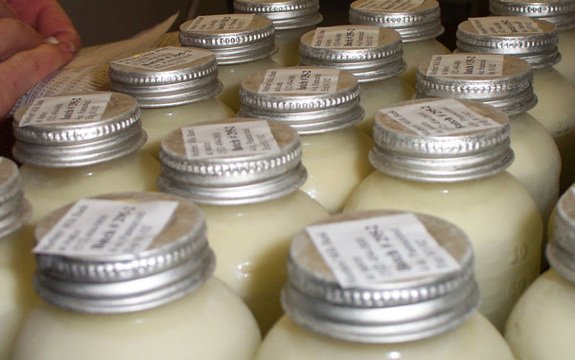Internet Breast Milk: Study Finds Online Breast Milk to be ‘Contaminated’


Several online breast milk sharing websites have popped up over the past few years. These don’t normally operate like normal breast milk banks, which cater to infants in the NICU or with other priority babies that have healthy problems. These online milk sharing sites often operate a sort of classified ad system of women who produce and are willing to share their breast milk. Recently, though, it was found that the online-purchased milk had far higher levels of contamination than those from the milk bank. Almost three-fourths of those samples failed the criteria set forth by the Human Milk Banking Association of North America.
The breast milk being offered on these sites isn’t always high-quality. Published in the journal Pediatrics, the researchers involved with one study analyzed 101 unpasteurized breast milk samples from one of the most popular milk sharing sites in the country. These samples came from women all over the country and they were compared with 20 samples from a traditional milk bank.
Here are the proportions of human milk samples with each bacteria type for Internet versus banked milk:
- Coliform — – 44% of samples of milk sold online versus 25% of human milk samples
- Salmonella sp — – 3% versus 0%
- Staphylococcus sp — – 63% versus 25%
- Streptococcus sp — – 36% versus 20%
The researchers believe many of the differences could be attributed to collection practices. Online breast milk sharing sites offer limited oversight and guidance to the sellers that advertise there. Milk banks, on the other hand, have strict screening practices and training as well.
Read: 11 Herbs to Naturally Improve Lactation
Still, it’s important to note: all breast milk has bacteria and bacteria isn’t necessarily a cause for serious alarm. Even the lead researcher Sarah Keim of the Center for Biobehavioral Health at Nationwide Children’s Hospital said much of the bacteria within could help to strengthen a baby’s immune system, and the presence of the detected bacteria doesn’t necessarily mean the breast milk would be harmful.
When it comes to purchasing anything off the Internet, and certainly something you plan on feeding your infant, it’s truly a case of buyer beware. The researchers are still looking at just how many of the samples had been diluted with cow’s milk, which could have further elevated their contamination levels. Some of the sellers on these sites could be more concerned about their income than the health of the infants they are providing for, and as an average consumer, there isn’t a whole lot you can do at home to test the possible contamination of breast milk purchased over the internet.
While it’s a good sign that women are looking for breast milk for their babies even when they feel like they cannot provide it themselves, it could be a sign that we aren’t giving new mothers the support they need to breastfeed their own babies. Breastfeeding certainly comes with challenges, but many of these challenges can be overcome with the help of a breastfeeding coach or education before and immediately following childbirth.
Read: Breastfeeding Could Save 830,000 Lives Annually
Despite breast milk being the most healthful option for infants, less than half of U.S. babies are being breastfed at six months of age. Only 27 percent are being breastfed at one year old. Some of this could be blamed on the formula industry, that’s helped to convince people breastfeeding is unclean, unsightly, and just not necessary. Others, however, could be due to new mothers that have a difficult time breastfeeding—mothers that could turn to a new booming business—online breast milk sharing.
